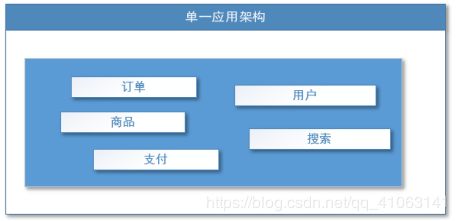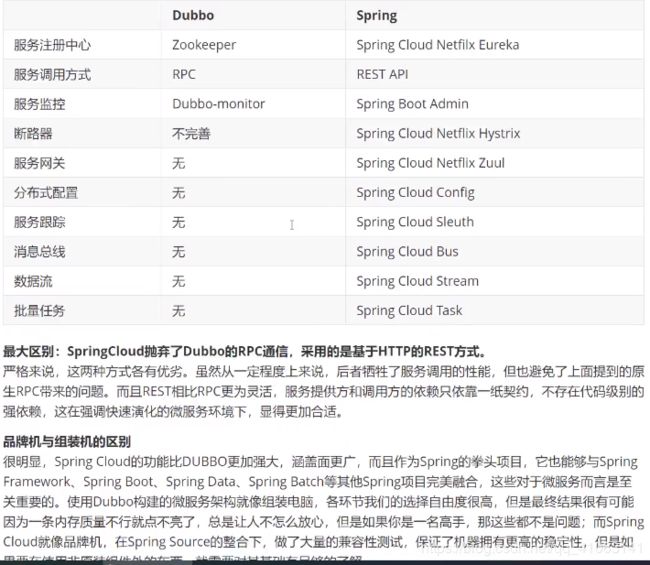- 分布式学习笔记_04_复制模型
NzuCRAS
分布式学习笔记架构后端
常见复制模型使用复制的目的在分布式系统中,数据通常需要被分布在多台机器上,主要为了达到:拓展性:数据量因读写负载巨大,一台机器无法承载,数据分散在多台机器上仍然可以有效地进行负载均衡,达到灵活的横向拓展高容错&高可用:在分布式系统中单机故障是常态,在单机故障的情况下希望整体系统仍然能够正常工作,这时候就需要数据在多台机器上做冗余,在遇到单机故障时能够让其他机器接管统一的用户体验:如果系统客户端分布
- php 高并发下日志量巨大,如何高效采集、存储、分析
贵哥的编程之路(热爱分享 为后来者)
PHP语言经典程序100题php开发语言
1.问题背景高并发系统每秒产生大量日志(如访问日志、错误日志、业务日志等)。单机写入、存储、分析能力有限,容易成为瓶颈。需要支持实时采集、分布式存储、快速检索与分析。2.主流架构方案一、分布式日志采集架构[应用服务器(PHP等)]|v[日志采集Agent(如Filebeat、Fluentd、Logstash)]|v[消息队列/缓冲(如Kafka、Redis、RabbitMQ)]|v[日志存储(如E
- RocketMQ 之死信队列
firepation
RocketMQrocketmq
在分布式消息系统中,消息的可靠传递和处理至关重要。然而,由于各种原因(如消息处理失败、消费超时等),一些消息可能无法被正常消费。这些无法被消费的消息如果不加以处理,会影响系统的稳定性和数据一致性。为了解决这一问题,RocketMQ提供了死信队列(DeadLetterQueue,DLQ)机制。本文将深入探讨RocketMQ的死信队列,包括其实现原理、应用场景以及使用示例。什么是死信队列?死信队列是一
- ZooKeeper架构及应用场景详解
走过冬季
学习笔记zookeeper架构分布式
ZooKeeper是一个开源的分布式协调服务,由Apache软件基金会维护。它旨在为分布式应用提供高性能、高可用、强一致性的基础服务,解决分布式系统中常见的协调难题(如配置管理、命名服务、分布式锁、服务发现、领导者选举等)。核心软件架构ZooKeeper的架构设计围绕其核心目标(协调)而优化,主要包含以下关键组件:集群模式(Ensemble):ZooKeeper通常部署为集群(称为ensemble
- zookeeper etcd区别
sun007700
zookeeperetcd分布式
ZooKeeper与etcd的核心区别体现在设计理念、数据模型、一致性协议及适用场景等方面。ZooKeeper基于ZAB协议实现分布式协调,采用树形数据结构和临时节点特性,适合传统分布式系统;而etcd基于Raft协议,以高性能键值对存储为核心,专为云原生场景优化,是Kubernetes等容器编排系统的默认存储组件。12架构与设计目标差异ZooKeeper。设计定位:专注于分
- 分布式选举算法<一> Bully算法
分布式选举算法详解:Bully算法引言在分布式系统中,节点故障是不可避免的。当主节点(Leader)发生故障时,系统需要快速选举出新的主节点来保证服务的连续性。Bully算法是一种经典的分布式选举算法,以其简单高效的特点被广泛应用于各种分布式系统中。什么是Bully算法?Bully算法是一种基于优先级的分布式选举算法。每个节点都有一个唯一的ID,ID值越大的节点优先级越高。当主节点故障时,优先级最
- 全面探索Kafka:架构、应用与流处理
Kafka:企业级消息系统与流处理平台的深度解析ApacheKafka作为分布式流处理平台,广泛应用于大数据处理和实时分析领域。本文将基于其官方文档,详细探讨Kafka的核心功能、应用场景以及如何进行有效管理。背景简介Kafka作为高吞吐量的消息系统,支持企业级的发布-订阅模式。它能够处理大量实时数据,并支持高并发读写操作。本文将依据Kafka官方文档的内容,逐层深入,从入门到高级应用,帮助读者全
- Elasticsearch搜索引擎存储:从原理到实践的全景解析
Python×CATIA工业智造
搜索引擎elasticsearch大数据
引言在大数据时代,数据规模呈指数级增长,传统数据库的模糊查询、实时分析能力逐渐成为瓶颈。Elasticsearch(简称ES)凭借其分布式架构、实时搜索和灵活的数据分析能力,成为企业级搜索与存储的核心引擎。截至2025年,ES在全球日志分析、电商搜索、实时监控等场景的市场占有率超过60%。本文将从存储架构、核心技术、应用场景及优化策略四个维度,深入解析Elasticsearch的设计哲学与实践价值
- Python爬虫实战:基于最新技术的定时签到系统开发全解析
Python爬虫项目
2025年爬虫实战项目python爬虫开发语言人工智能自动化知识图谱
摘要本文详细介绍了如何使用Python开发一个功能完善的定时签到爬虫系统。文章从爬虫基础知识讲起,逐步深入到高级技巧,包括异步请求处理、浏览器自动化、验证码破解、分布式架构等最新技术。我们将通过一个完整的定时签到项目案例,展示如何构建一个稳定、高效且具有良好扩展性的爬虫系统。文中提供了大量可运行的代码示例,涵盖requests、aiohttp、selenium、playwright等多种技术方案,
- 【Kafka专栏 13】Kafka的消息确认机制:不是所有的“收到”都叫“确认”!
作者名称:夏之以寒作者简介:专注于Java和大数据领域,致力于探索技术的边界,分享前沿的实践和洞见文章专栏:夏之以寒-kafka专栏专栏介绍:本专栏旨在以浅显易懂的方式介绍Kafka的基本概念、核心组件和使用场景,一步步构建起消息队列和流处理的知识体系,无论是对分布式系统感兴趣,还是准备在大数据领域迈出第一步,本专栏都提供所需的一切资源、指导,以及相关面试题,立刻免费订阅,开启Kafka学习之旅!
- web3中的ipfs
财神爷首席大弟子
web3去中心化区块链
什么是web3:是基于区块链技术的分布式网络,主要目标是建立一个去中心化与信任化的互联网去中心化以及是信任化区块链:将所有的交易记录和什么护具存储在分布式网络中,每一个node都有完整的数据副本任何一个node修改都需要得到其他节点的认可,确保数据的真实性和和可信度web3有一些关键技术和标准,例如以太坊,IPFS,ENS,ERC标准等以太坊:以太币是一个开源的有智能合约功能的公共区块链平台,通过
- 使用ceph-ansible部署分布式存储Ceph-octopus版本
降世神童
云计算技术专栏分布式cephansible
使用ceph-ansible部署分布式存储Ceph-octopus版本1.Ceph基础概念及部署方式1.1.Ceph基本概念1.2.Ceph部署方式2.系统初始化配置3.Ceph集群部署3.1.Ansible安装与配置3.2.ceph-ansible安装与配置3.2.1.下载ceph-ansible3.2.2.安装ceph-ansible依赖3.2.3.修改ceph配置文件3.3.开始部署ceph
- 2024年运维最新分布式存储ceph osd 常用操作_ceph查看osd对应硬盘(1),2024年最新Linux运维编程基础教程
2401_83944328
程序员运维分布式ceph
最全的Linux教程,Linux从入门到精通======================linux从入门到精通(第2版)Linux系统移植Linux驱动开发入门与实战LINUX系统移植第2版Linux开源网络全栈详解从DPDK到OpenFlow第一份《Linux从入门到精通》466页====================内容简介====本书是获得了很多读者好评的Linux经典畅销书**《Linu
- 【赵渝强老师】基于PostgreSQL的分布式数据库:Citus
由于PostgreSQL具有强大的功能和良好的可扩展性,因此基于PostgreSQL很容易就可以实现分布式架构。Citus便是具体的一种实现方式。它以扩展的插件形式与PostgreSQL进行集成,且独立于PostgreSQL内核,部署也比较简单。Citus是现在非常流行的基于PostgreSQL的分布式解决方案。一、Citus基础下面是百度百科中对分布式数据库的定义:分布式数据库系统通常使用较小的
- 使用HarmonyOS 5和CodeGenie辅助工具开发鸿蒙运动健康类应用的项目总结
哼唧唧_
CodeGenie运动健康HarmonyOS5harmonyos华为
一、项目背景与目标随着鸿蒙生态在穿戴设备、智能家居领域的快速扩展,我团队基于HarmonyOS5操作系统,开发了一款面向运动健康场景的智能应用——“Harmony健康伴侣”。项目采用华为官方推出的智能编程助手CodeGenie进行辅助开发,旨在验证CodeGenie在提升鸿蒙应用开发效率与质量方面的实际效果。二、核心功能实现该应用深度融合HarmonyOS分布式能力,支持跨设备无缝协同,主要功能包
- 万物智联时代启航:鸿蒙OS重塑全场景开发新生态
黑巧克力可减脂
鸿蒙开发鸿蒙系统
目录HarmonyOS简介:分布式操作系统,开启万物智联新时代HarmonyOS发展历程:从破局到引领核心特性:分布式技术三支柱应用场景:全场景覆盖的鸿蒙生态什么选择鸿蒙开发?技术红利与市场蓝海结语:拥抱鸿蒙,赢在万物智联起点HarmonyOS简介:分布式操作系统,开启万物智联新时代什么是鸿蒙?HarmonyOS(鸿蒙操作系统)是华为自主研发的面向全场景的分布式操作系统,其核心使命是打破设备孤岛,
- redis锁java实现
brave_zhao
redisjava数据库
以下是几种常见的Redis分布式锁的Java实现方式:1.基于SETNX命令的实现SETNX命令(对应Java中的setIfAbsent方法)是实现Redis分布式锁的基础。以下是实现代码:importredis.clients.jedis.Jedis;publicclassRedisLock{privateJedisjedis;publicRedisLock(Jedisjedis){this.j
- 服务实现99.99%高可用的核心措施
在分布式系统中,高可用性(HA)是衡量服务可靠性的核心指标。99.99%的可用性意味着系统每年的停机时间不超过约52.6分钟,这对金融交易、电信服务等关键业务至关重要。一、冗余设计与故障转移原理:通过冗余部署消除单点故障,确保部分节点故障时服务仍可用。故障转移机制自动将流量切换至健康节点,缩短服务中断时间。Java服务实现:集群部署:使用SpringCloudAlibaba或Dubbo构建微服务集
- 分布式事务解决方案总结:本地消息异步确认、可靠消息最终一致性、最大努力通知
码到三十五
面试攻关分布式springcloudspringboot
❃博主首页:「码到三十五」,同名公众号:「码到三十五」☠博主专栏:♝博主的话:搬的每块砖,皆为峰峦之基;公众号搜索「码到三十五」关注这个爱发技术干货的coder,一起筑基分布式系统中事务是一个重要挑战,先从从实现原理、技术细节、适用场景三个维度,对三种主流分布式事务解决方案进行简单总结。一、本地消息异步确认方案实现原理该方案通过「本地事务+消息表」机制实现最终一致性,核心思想是将业务操作与消息发送
- SkyWalking实现微服务链路追踪的埋点方案
MenzilBiz
服务器运维微服务skywalking
SkyWalking实现微服务链路追踪的埋点方案一、SkyWalking简介SkyWalking是一款开源的APM(应用性能监控)系统,特别为微服务、云原生架构和容器化(Docker/Kubernetes)应用而设计。它主要功能包括分布式追踪、服务网格遥测分析、指标聚合和可视化等。SkyWalking支持多种语言(Java、Go、Python等)和协议(HTTP、gRPC等),能够提供端到端的调用
- 从面试懵逼到通透掌握:分布式锁原理全解(附Redisson与Redlock机制剖析)
爱骑行的Coder
数据库redisjava基础面试分布式javaredis后端
从面试懵逼到通透掌握:分布式锁原理全解(附Redisson与Redlock机制剖)你是不是也有这样的经历?简历上写着“精通Java,精通Redis,熟悉高并发场景”,结果一面下来,分布式锁怎么实现?Redisson是怎么加锁的?看门狗机制了解吗?锁丢失你知道怎么解决吗?全程“啊能能”,频频磕巴。本文不整虚的,带你从0到1,一步步真正搞懂分布式锁的原理与落地实践,面试高频,架构核心,不能不会。一、什
- 医疗金融预测与语音识别中的模型优化及可解释性技术突破
智能计算研究中心
其他
内容概要随着人工智能技术的纵深发展,模型优化与可解释性技术正在重塑医疗诊断、金融预测及语音识别领域的应用范式。在医疗领域,基于自适应学习的动态参数调整机制,结合迁移学习的跨场景知识复用,显著提升了疾病筛查模型的泛化能力;而金融预测场景中,联邦学习框架通过分布式数据协作,在保障隐私安全的前提下,实现了风险预测模型的多维度优化。语音识别领域则依托边缘计算架构,将模型压缩技术与实时推理引擎结合,有效解决
- Spring Boot 在后端领域的微服务负载均衡实践
AI大模型应用实战
springboot微服务负载均衡ai
SpringBoot在后端领域的微服务负载均衡实践关键词:SpringBoot、微服务、负载均衡、Ribbon、服务发现、高可用、分布式系统摘要:本文深入探讨了SpringBoot在微服务架构中实现负载均衡的实践方法。我们将从基础概念出发,详细分析负载均衡的核心原理,介绍SpringCloud生态中的关键组件(如Ribbon、Eureka等),并通过完整的代码示例展示如何在实际项目中实现高效的负载
- Kafka系列之:安装具有安全认证的kafka-2.8.2分布式集群
快乐骑行^_^
大数据Kafka系列安全认证kafka-2.8.2分布式集群
Kafka系列之:安装具有安全认证的kafka-2.8.2分布式集群一、下载Zookeeper3.7.1和Kafka2.8.2二、解压Zookeeper3.7.1和Kafka2.8.2三、安装Zookeeper3.7.1详细步骤1.修改zookeeper配置文件2.创建zookeeper数据目录3.zookeeper创建myid4.设置zookeeper访问kafka认证5.拷贝zookeeper
- 如何通过YashanDB做到企业数据的透明化管理
数据库
在当前数字化转型的背景下,企业面临的数据管理挑战愈发复杂,尤其是数据的透明化管理显得尤为重要。企业往往需要对海量数据进行实时分析和决策支持,而现有的传统管理方式难以满足高效和透明化的需求。YashanDB作为一款高效的分布式数据库,提供了多种支持透明化管理的特性,通过其独特的体系架构和技术手段,能够帮助企业实现数据的透明化管理。YashanDB的体系架构与透明化管理部署架构YashanDB支持多种
- 国产开源高性能对象存储RustFS保姆级上手指南
光爷不秃
对象存储rust国产开源软件rust云计算开源软件github开源数据仓库database
在云计算与大数据爆发的时代,企业和开发者对存储方案的要求愈发严苛——不仅要能扛住海量数据的读写压力,还得兼顾安全性、可扩展性和兼容性。今天给大家介绍一款基于Rust语言开发的开源分布式对象存储系统——RustFS,它不仅是MinIO的国产化优秀替代方案,更是AI、大数据和云原生场景的理想之选。本文将从基础介绍到实战操作,带大家快速上手这款"优雅的存储解决方案"。一、RustFS核心特性解析Rust
- 【大家的项目】helyim: 纯 Rust 实现的分布式对象存储系统
helyim是使用rust重写的seaweedfs,具体架构可以参考Facebook发表的haystack和f4论文。主要设计目标为:精简文件元数据信息,去掉对象存储不需要的POSIX语义(如文件权限)小文件合并成大文件,从而减小元数据数,使其完全存在内存中,以省去获取文件元数据的磁盘IO支持地域容灾,包括IDC容灾和机架容灾架构简单,易于实现和运维支持的特性:支持使用Http的文件上传,下载,删
- 【Rust日报】使用Rust开发分布式系统的经验教训
Fjall-一个安全Rust的KV存储引擎Fjall是一个可嵌入的基于LSM的forbid-unsafeRust键值存储引擎。它的目标是成为一个可靠且可预测但性能优异的通用KV存储引擎,适用于小型数据集,尤其是大于内存大小的数据集。我刚刚发布了1.0版本,该版本稳定了其数据格式,适用于所有未来的1.x.x版本。它的设计受到了LevelDB/RocksDB架构的重大影响,并且通常具有相似的性能。它具
- RustFS一款Rust 驱动的 高性能 分布式存储系统
❀͜͡傀儡师
rust分布式开发语言
演示地址:https://play.rustfs.com/browser访问账号(默认rustfsadmin)。访问密钥(默认rustfsadmin)。下载mchttps://dl.min.io/client/mc/release可以直接在Linux系统上安装mc(,然后访问Docker容器内的RustFS服务。下载并安装:wgethttps://dl.min.io/client/mc/relea
- 突破传统:Dell R730服务器RAID 5配置与智能监控全解析
芯作者
D2:ubuntu服务器linuxubuntu
在现代数据中心运维中,合理的存储配置是保障业务连续性的基石。今天,我们将深入探索DellPowerEdgeR730服务器的RAID5配置技巧,并结合热备盘策略、自动化监控脚本以及性能调优方案,为您呈现一份别开生面的技术指南。一、为什么RAID5+热备盘是企业级存储的黄金组合?RAID5通过分布式奇偶校验实现数据冗余,允许单块硬盘故障时不丢失数据。其存储效率公式为:Efficiency=\frac{
- HQL之投影查询
归来朝歌
HQLHibernate查询语句投影查询
在HQL查询中,常常面临这样一个场景,对于多表查询,是要将一个表的对象查出来还是要只需要每个表中的几个字段,最后放在一起显示?
针对上面的场景,如果需要将一个对象查出来:
HQL语句写“from 对象”即可
Session session = HibernateUtil.openSession();
- Spring整合redis
bylijinnan
redis
pom.xml
<dependencies>
<!-- Spring Data - Redis Library -->
<dependency>
<groupId>org.springframework.data</groupId>
<artifactId>spring-data-redi
- org.hibernate.NonUniqueResultException: query did not return a unique result: 2
0624chenhong
Hibernate
参考:http://blog.csdn.net/qingfeilee/article/details/7052736
org.hibernate.NonUniqueResultException: query did not return a unique result: 2
在项目中出现了org.hiber
- android动画效果
不懂事的小屁孩
android动画
前几天弄alertdialog和popupwindow的时候,用到了android的动画效果,今天专门研究了一下关于android的动画效果,列出来,方便以后使用。
Android 平台提供了两类动画。 一类是Tween动画,就是对场景里的对象不断的进行图像变化来产生动画效果(旋转、平移、放缩和渐变)。
第二类就是 Frame动画,即顺序的播放事先做好的图像,与gif图片原理类似。
- js delete 删除机理以及它的内存泄露问题的解决方案
换个号韩国红果果
JavaScript
delete删除属性时只是解除了属性与对象的绑定,故当属性值为一个对象时,删除时会造成内存泄露 (其实还未删除)
举例:
var person={name:{firstname:'bob'}}
var p=person.name
delete person.name
p.firstname -->'bob'
// 依然可以访问p.firstname,存在内存泄露
- Oracle将零干预分析加入网络即服务计划
蓝儿唯美
oracle
由Oracle通信技术部门主导的演示项目并没有在本月较早前法国南斯举行的行业集团TM论坛大会中获得嘉奖。但是,Oracle通信官员解雇致力于打造一个支持零干预分配和编制功能的网络即服务(NaaS)平台,帮助企业以更灵活和更适合云的方式实现通信服务提供商(CSP)的连接产品。这个Oracle主导的项目属于TM Forum Live!活动上展示的Catalyst计划的19个项目之一。Catalyst计
- spring学习——springmvc(二)
a-john
springMVC
Spring MVC提供了非常方便的文件上传功能。
1,配置Spring支持文件上传:
DispatcherServlet本身并不知道如何处理multipart的表单数据,需要一个multipart解析器把POST请求的multipart数据中抽取出来,这样DispatcherServlet就能将其传递给我们的控制器了。为了在Spring中注册multipart解析器,需要声明一个实现了Mul
- POJ-2828-Buy Tickets
aijuans
ACM_POJ
POJ-2828-Buy Tickets
http://poj.org/problem?id=2828
线段树,逆序插入
#include<iostream>#include<cstdio>#include<cstring>#include<cstdlib>using namespace std;#define N 200010struct
- Java Ant build.xml详解
asia007
build.xml
1,什么是antant是构建工具2,什么是构建概念到处可查到,形象来说,你要把代码从某个地方拿来,编译,再拷贝到某个地方去等等操作,当然不仅与此,但是主要用来干这个3,ant的好处跨平台 --因为ant是使用java实现的,所以它跨平台使用简单--与ant的兄弟make比起来语法清晰--同样是和make相比功能强大--ant能做的事情很多,可能你用了很久,你仍然不知道它能有
- android按钮监听器的四种技术
百合不是茶
androidxml配置监听器实现接口
android开发中经常会用到各种各样的监听器,android监听器的写法与java又有不同的地方;
1,activity中使用内部类实现接口 ,创建内部类实例 使用add方法 与java类似
创建监听器的实例
myLis lis = new myLis();
使用add方法给按钮添加监听器
- 软件架构师不等同于资深程序员
bijian1013
程序员架构师架构设计
本文的作者Armel Nene是ETAPIX Global公司的首席架构师,他居住在伦敦,他参与过的开源项目包括 Apache Lucene,,Apache Nutch, Liferay 和 Pentaho等。
如今很多的公司
- TeamForge Wiki Syntax & CollabNet User Information Center
sunjing
TeamForgeHow doAttachementAnchorWiki Syntax
the CollabNet user information center http://help.collab.net/
How do I create a new Wiki page?
A CollabNet TeamForge project can have any number of Wiki pages. All Wiki pages are linked, and
- 【Redis四】Redis数据类型
bit1129
redis
概述
Redis是一个高性能的数据结构服务器,称之为数据结构服务器的原因是,它提供了丰富的数据类型以满足不同的应用场景,本文对Redis的数据类型以及对这些类型可能的操作进行总结。
Redis常用的数据类型包括string、set、list、hash以及sorted set.Redis本身是K/V系统,这里的数据类型指的是value的类型,而不是key的类型,key的类型只有一种即string
- SSH2整合-附源码
白糖_
eclipsespringtomcatHibernateGoogle
今天用eclipse终于整合出了struts2+hibernate+spring框架。
我创建的是tomcat项目,需要有tomcat插件。导入项目以后,鼠标右键选择属性,然后再找到“tomcat”项,勾选一下“Is a tomcat project”即可。具体方法见源码里的jsp图片,sql也在源码里。
补充1:项目中部分jar包不是最新版的,可能导
- [转]开源项目代码的学习方法
braveCS
学习方法
转自:
http://blog.sina.com.cn/s/blog_693458530100lk5m.html
http://www.cnblogs.com/west-link/archive/2011/06/07/2074466.html
1)阅读features。以此来搞清楚该项目有哪些特性2)思考。想想如果自己来做有这些features的项目该如何构架3)下载并安装d
- 编程之美-子数组的最大和(二维)
bylijinnan
编程之美
package beautyOfCoding;
import java.util.Arrays;
import java.util.Random;
public class MaxSubArraySum2 {
/**
* 编程之美 子数组之和的最大值(二维)
*/
private static final int ROW = 5;
private stat
- 读书笔记-3
chengxuyuancsdn
jquery笔记resultMap配置ibatis一对多配置
1、resultMap配置
2、ibatis一对多配置
3、jquery笔记
1、resultMap配置
当<select resultMap="topic_data">
<resultMap id="topic_data">必须一一对应。
(1)<resultMap class="tblTopic&q
- [物理与天文]物理学新进展
comsci
如果我们必须获得某种地球上没有的矿石,才能够进行某些能量输出装置的设计和建造,而要获得这种矿石,又必须首先进行深空探测,而要进行深空探测,又必须获得这种能量输出装置,这个矛盾的循环,会导致地球联盟在与宇宙文明建立关系的时候,陷入困境
怎么办呢?
- Oracle 11g新特性:Automatic Diagnostic Repository
daizj
oracleADR
Oracle Database 11g的FDI(Fault Diagnosability Infrastructure)是自动化诊断方面的又一增强。
FDI的一个关键组件是自动诊断库(Automatic Diagnostic Repository-ADR)。
在oracle 11g中,alert文件的信息是以xml的文件格式存在的,另外提供了普通文本格式的alert文件。
这两份log文
- 简单排序:选择排序
dieslrae
选择排序
public void selectSort(int[] array){
int select;
for(int i=0;i<array.length;i++){
select = i;
for(int k=i+1;k<array.leng
- C语言学习六指针的经典程序,互换两个数字
dcj3sjt126com
c
示例程序,swap_1和swap_2都是错误的,推理从1开始推到2,2没完成,推到3就完成了
# include <stdio.h>
void swap_1(int, int);
void swap_2(int *, int *);
void swap_3(int *, int *);
int main(void)
{
int a = 3;
int b =
- php 5.4中php-fpm 的重启、终止操作命令
dcj3sjt126com
PHP
php 5.4中php-fpm 的重启、终止操作命令:
查看php运行目录命令:which php/usr/bin/php
查看php-fpm进程数:ps aux | grep -c php-fpm
查看运行内存/usr/bin/php -i|grep mem
重启php-fpm/etc/init.d/php-fpm restart
在phpinfo()输出内容可以看到php
- 线程同步工具类
shuizhaosi888
同步工具类
同步工具类包括信号量(Semaphore)、栅栏(barrier)、闭锁(CountDownLatch)
闭锁(CountDownLatch)
public class RunMain {
public long timeTasks(int nThreads, final Runnable task) throws InterruptedException {
fin
- bleeding edge是什么意思
haojinghua
DI
不止一次,看到很多讲技术的文章里面出现过这个词语。今天终于弄懂了——通过朋友给的浏览软件,上了wiki。
我再一次感到,没有辞典能像WiKi一样,给出这样体贴人心、一清二楚的解释了。为了表达我对WiKi的喜爱,只好在此一一中英对照,给大家上次课。
In computer science, bleeding edge is a term that
- c中实现utf8和gbk的互转
jimmee
ciconvutf8&gbk编码
#include <iconv.h>
#include <stdlib.h>
#include <stdio.h>
#include <unistd.h>
#include <fcntl.h>
#include <string.h>
#include <sys/stat.h>
int code_c
- 大型分布式网站架构设计与实践
lilin530
应用服务器搜索引擎
1.大型网站软件系统的特点?
a.高并发,大流量。
b.高可用。
c.海量数据。
d.用户分布广泛,网络情况复杂。
e.安全环境恶劣。
f.需求快速变更,发布频繁。
g.渐进式发展。
2.大型网站架构演化发展历程?
a.初始阶段的网站架构。
应用程序,数据库,文件等所有的资源都在一台服务器上。
b.应用服务器和数据服务器分离。
c.使用缓存改善网站性能。
d.使用应用
- 在代码中获取Android theme中的attr属性值
OliveExcel
androidtheme
Android的Theme是由各种attr组合而成, 每个attr对应了这个属性的一个引用, 这个引用又可以是各种东西.
在某些情况下, 我们需要获取非自定义的主题下某个属性的内容 (比如拿到系统默认的配色colorAccent), 操作方式举例一则:
int defaultColor = 0xFF000000;
int[] attrsArray = { andorid.r.
- 基于Zookeeper的分布式共享锁
roadrunners
zookeeper分布式共享锁
首先,说说我们的场景,订单服务是做成集群的,当两个以上结点同时收到一个相同订单的创建指令,这时并发就产生了,系统就会重复创建订单。等等......场景。这时,分布式共享锁就闪亮登场了。
共享锁在同一个进程中是很容易实现的,但在跨进程或者在不同Server之间就不好实现了。Zookeeper就很容易实现。具体的实现原理官网和其它网站也有翻译,这里就不在赘述了。
官
- 两个容易被忽略的MySQL知识
tomcat_oracle
mysql
1、varchar(5)可以存储多少个汉字,多少个字母数字? 相信有好多人应该跟我一样,对这个已经很熟悉了,根据经验我们能很快的做出决定,比如说用varchar(200)去存储url等等,但是,即使你用了很多次也很熟悉了,也有可能对上面的问题做出错误的回答。 这个问题我查了好多资料,有的人说是可以存储5个字符,2.5个汉字(每个汉字占用两个字节的话),有的人说这个要区分版本,5.0
- zoj 3827 Information Entropy(水题)
阿尔萨斯
format
题目链接:zoj 3827 Information Entropy
题目大意:三种底,计算和。
解题思路:调用库函数就可以直接算了,不过要注意Pi = 0的时候,不过它题目里居然也讲了。。。limp→0+plogb(p)=0,因为p是logp的高阶。
#include <cstdio>
#include <cstring>
#include <cmath&





















